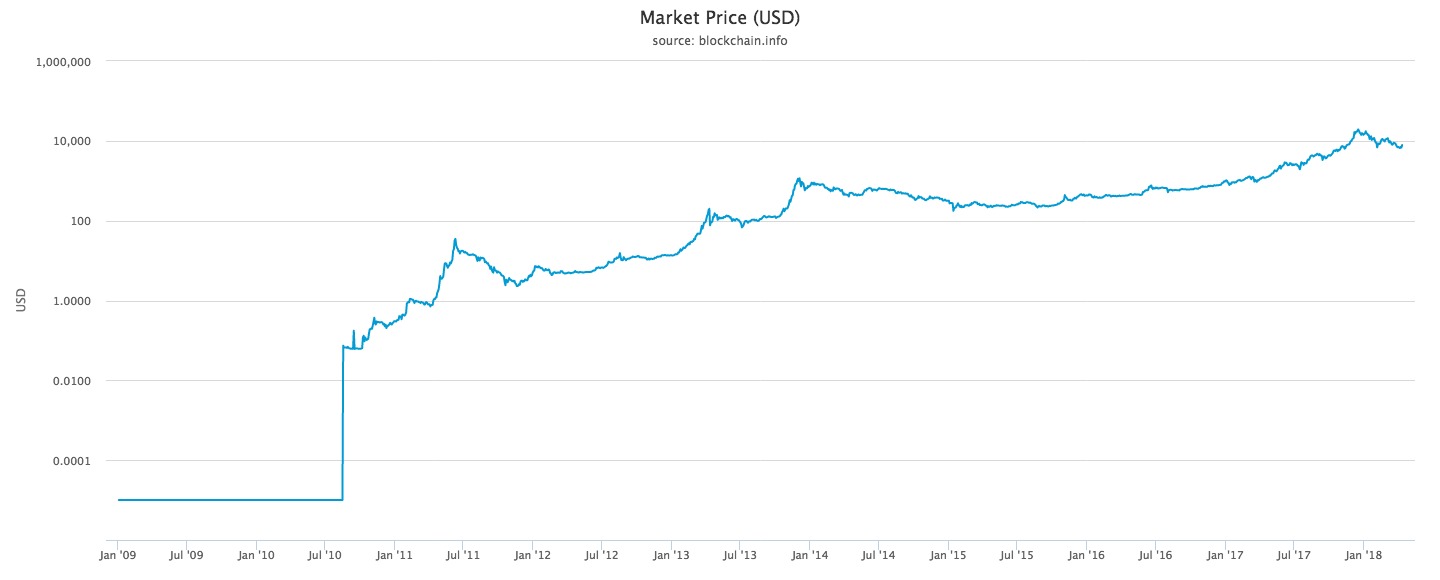Thus Does the Crypto Winter Endeth
Bitcoin might have just emerged from one of its many winters looking stronger than before. Admittedly, this most recent crash from $17.7K on December 18, 2017, to $6.8K on February 4, 2018, was especially traumatic. The sheer scale has rocked businesses the world over. As a proportional fall, the most recent slide was not especially notable. But as the valuations increase, so do the stakes.
Businesses hire developers, make financial commitments, expand their operations, plan sponsorships, and commit to infrastructure and marketing plans. Then, pow!, it happens and the company’s core assets are worth half or less than they were before. Velocity falls. Transactions die out. There are glum faces all around. It’s not a pretty sight.
No One Knows the Future Precisely
Those of us who have lived through such things in times past are perhaps more sanguine than most. I made an uncanny prediction in the summer of 2013 that the Bitcoin price would reach $1K by year’s end. I was a prophet, until the crash that came a few months later. The bottom of the market came January 13, 2015 with a price of $177. This I had not anticipated. A 90% crash is nothing to shake a stick at, and it is completely understandable that many declared crypto to be dead. Indeed, Bitcoin has been declared dead 278 times.
And so it was this time around. But enough experience in this realm increases the confidence that spring follows winter. If you understand and believe in the technology, the price is intellectually incidental. We should have all seen, even from October 5, 2009, when the first price of Bitcoin was born, that a new chapter in history had emerged: magic Internet money was born, not of the government or of the Federal Reserve but of pure code. It was not supposed to be possible. Then it happened.
Materially, the price does matter. When winter comes, it is just a matter of waiting for spring, even if you don’t sleep that well in the intervening period.
So what causes the price to move so dramatically? It can’t be emphasized enough that we are in the experimental phase. Every new technology goes through it, whether steam power, internal combustion, railroads, indoor electricity, flight, or Internet commerce. In this time, it’s the disasters and not the innovations that make the headlines. You will read about the errors, the frauds, the accidents, the hoaxes, the booms and busts, the messes. You will not read about the promise, the achievement, the transformation.
Such periods are punctuated by waves of optimism and pessimism and this reflects in the buy/sell decisions people make. Even when it doesn’t make sense. Or rather: people trade based on whatever information they can gather and run it through a perception machine concerning what they believe others believe about this information. The most extensive analysis ever done on the price of Bitcoin comes from AIER and it shows one main factor driving the price: the news. This winter, in this case, came from a series of announcements from various government officials about a coming crackdown: taxes, regulations, shutdowns, sting operations, and so on. It was all too much.
Winter Is Gone
What ended the winter? I find three major factors here.
First, there is new adoption taking place within large funds of an establishment sort. I’m speaking here of Rockefeller and Soros relationships. Investors don’t like to be left out. You can cite all the government warnings and threats you want but when the major players in the world economy are adopting, it means something.
Second, the end of the tax season arrived. Perhaps for the first time, many crypto owners became profoundly aware that it would be a fiscal error to decline to report earnings in this market. At the end of the calendar year, the earnings had become extremely intense. Just to pay what they owed, they had to sell. For months, in fact, industry insiders have predicted a price recovery following tax season.
Third, and perhaps most importantly, the news broke that a major Islamic scholar had declared that cryptocurrency is compatible with Sharia law. Just the term “Sharia law” in the West strikes many people as strange and foreign. In fact, this religious law is not that different from Talmudic law in the Jewish tradition or Canon law in the Catholic tradition. It is diverse, forever adapting and evolving, and very serious with regard to scholarship and legal tradition. And it has profoundly affected money and banking in the Islamic world.
Reality-Based Money
My understanding of Sharia is that it looks down on (or forbids) charging interest based purely on loans, though it permits payments for profit sharing and loss bearing. That leaves much room for interpretation. This is roughly where the Catholic world was with the question of usury in the 13th century until the prohibitions finally broke down in the 16th century. In general, this creates a bias against debt-based monetary institutions, and it is for this reason that gold as currency retains a higher place today in the Islamic world than in other parts of the world.
Because crypto trends toward final settlement at the moment of transaction, and discourage the issue of more tokens than there are in existence to redeem them, and, in fact, makes it technically impossible to create more substitutes than there is specie to pay, it would make some sense that Sharia law would take a favorable view.
The Islamic world does constitute fully one-quarter of the world’s population, and the need for a money that is transnational, private, independent, and trustworthy is readily apparent. It was when the news broke that something approaching a consensus is developing in this world that all crypto markets shot up.
There will be another winter. And another. To get the best sense of the potential here, it’s best to look at the price, not day to day, but on a logarithmic scale. Here is where we can see the potential of the technology. That has a much more meaningful significance than the fickle judgments of seasonal news hounds that make the difference on the daily margin.












